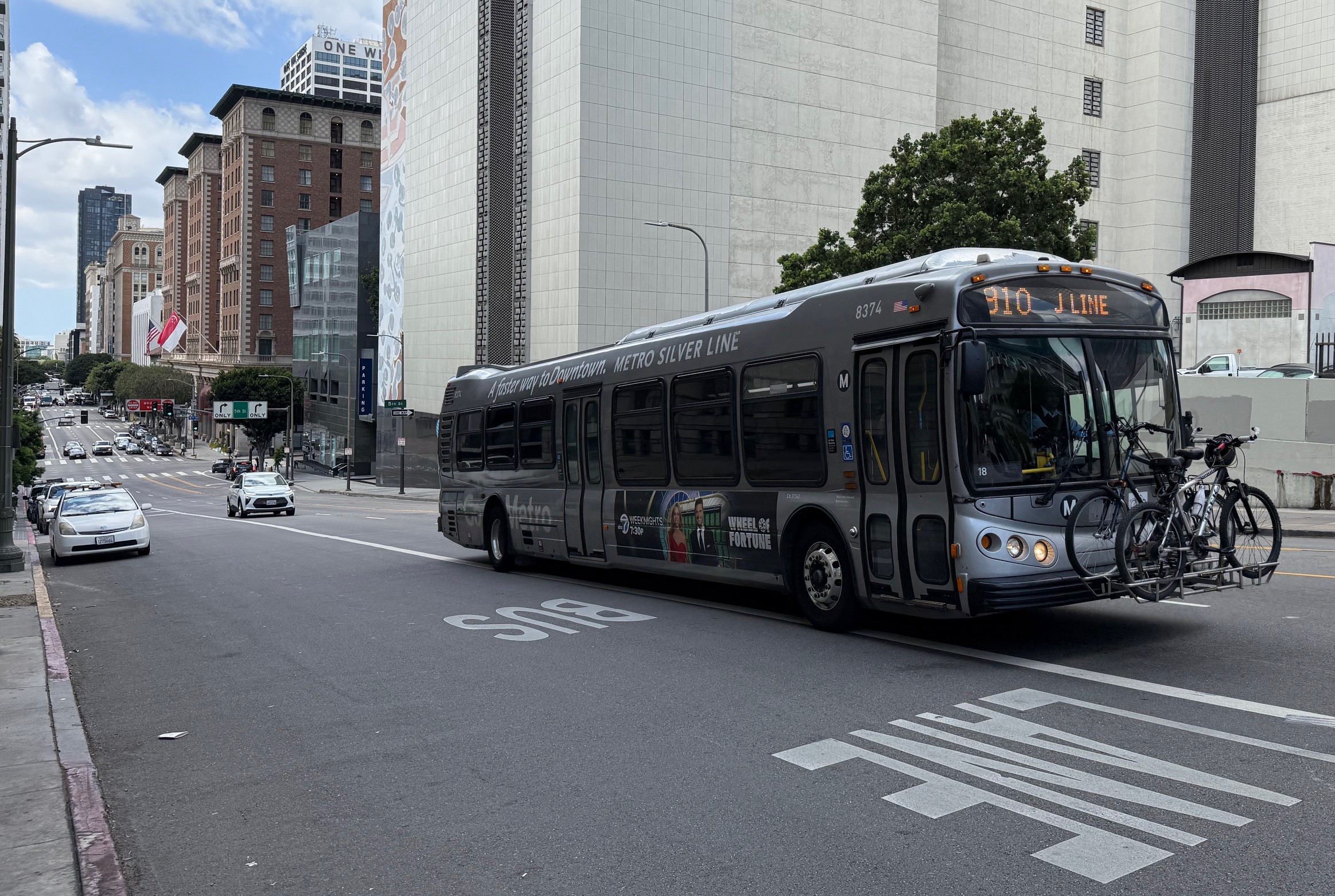 Wildflowers in Bloom at the cornfields. Note the proximity of industrial development.
Wildflowers in Bloom at the cornfields. Note the proximity of industrial development.The
Los Angeles City Planning department held scoping meetings on March
16th 2009 to hear comments on their proposed Cornfield Arroyo Seco
Specific Plan, known as the CASP. The good news is that CASP has a lot
of great features that will transform the area. Among these are: river
greenway area set-asides, parking reform, and dozens of miles of
bikeways. The somewhat-bad news is that it will take a while.
Environmental review will take a year, so the plan will be adopted in
2010. Once the plan goes into effect, over the next couple dozen years,
it will gradually guide private and public development.
The CASP covers approximately 660 acres located in the communities
of Lincoln Heights, Cypress Park and Chinatown - including the areas
around the Chinatown and Lincoln/Cypress Metro Gold Line stations.
The CASP area is today largely industrial. Much of it is older,
somewhat-obsolete multi-story industrial. With the state's purchase of
the 35-acre Cornfields Rail Yard (now Los Angeles State Historic Park in progress) in 2001, the arrival of the Metro Gold Line in 2003, and the planned greenways along the Los Angeles River and the Arroyo Seco, the area is changing. Industrial sites are giving way to housing and mixed-use. The CASP attempts to steer this change.
The CASP is environmentally ambitious. The plan is one pilot for the US Green Building Council's new "LEED-ND" (stands for Leadership in Energy and Environmental Design for Neighborhood Development) - a new green building program for certifying multiple buildings in a neighborhood context.
Some highlights of progressive environmentally-friendly policies in the CASP:
OPEN SPACE AND RIVER GREENWAYS:
With an overall 15% open space requirement, the CASP plans a
significant amount of public green space distributed throughout.
Additionally, parcels along the L.A. River and the Arroyo Seco are
limited to 50% lot coverage, so that, as development occurs, greenways
emerges along these waterways.
PARKING REFORM:
The CASP unbundles parking from housing! Currently anyone who buys a
condo in Los Angeles pays for two (or more) parking spaces. This is
automatic, whether that owner ever parks car/s in them or not. As
parking space can cost $20,000 to $40,000+ this requirement typically
adds upwards of $50,000 to the purchase price of the condo. Unbundling
means that the home and the parking are sold separately. The buyer can
chose to buy only as much parking as she or he needs. Bicyclists could
purchase none. Single people or small families could purchase just one.
This makes housing more affordable, and incentivizes reducing excessive
car ownership.
Additional excellent parking reforms include: parking maximums (instead
of minimums), bicycle parking requirements, shared parking, parking
design requirements, parking meter zones and more. It may not be parking sage Don Shoup's paradise, but it goes a long way in that direction.
BIKEWAYS:
The CASP plans an impressive network of bike facilities. There will be
bike paths along the Los Angeles River and the Arroyo Seco. There will
be bike lanes on North Figueroa Street, Avenue 26, Pasadena Avenue, San
Fernando Road/Avenue 20, Avenue 19, Barranca Street, Avenue 18, North
Broadway, North Spring Street, and North Main Street!
Those are just some of the highlights, there are many more
environmental and smart urban design features. For more information,
there's quite a bit of detailed documentation on-line about the CASP:
Overall CASP Website
Notice Preparation of Environmental Impact Report (400KB 4-page pdf)
Initial Study and CEQA Checklist (3MB 33-page pdf - good 17-page summary)
Draft CASP Ordinance (14 multi-page pdfs)
CASP Frequently Asked Questions
(This entry has been cross-posted at L.A. Creek Freak and L.A. Streetsblog )






